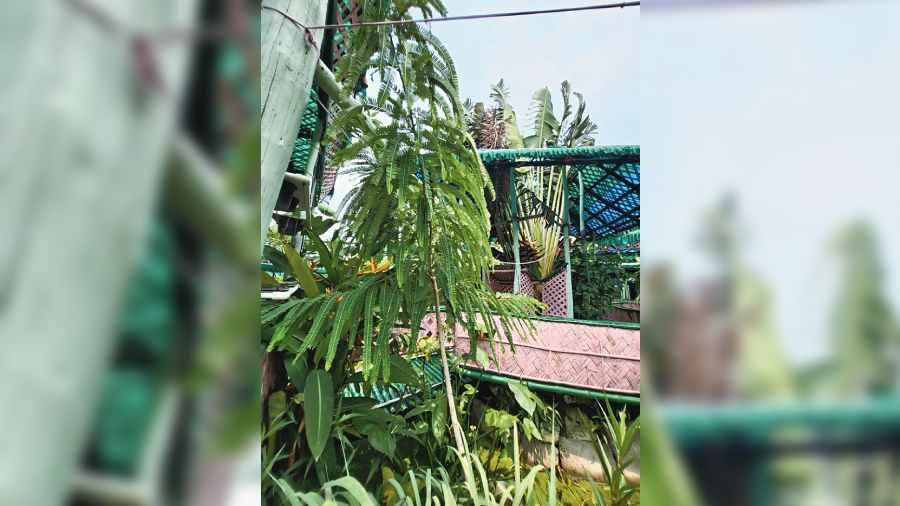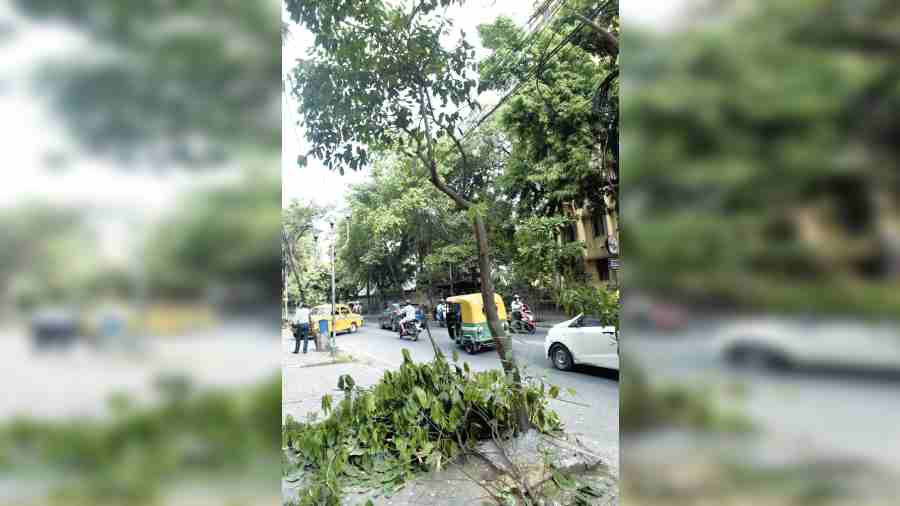Trees fall like cards every time a storm hits Kolkata, further reducing the city’s already scarce green cover.
More than 50 trees fell in the Kolkata municipal area during and after Saturday afternoon’s Nor’wester that clocked 90kmph, said officials of Kolkata Municipal Corporation (KMC) on Sunday.
The officials had put the number of fallen trees in the 30s on Saturday evening. They revised the figure on Sunday evening as more reports arrived.
“Uprooted trees as well as those that lost significant portions to the storm total 50, at least,” said a KMC official.
Hundreds of trees fell in the city during Cyclone Amphan in May 2020.
Cementing the footpath surrounding a tree and improper trimming that distorts the balance are two major reasons cited for large-scale falling of trees in the city, experts said.
The KMC has cemented footpaths around trees. This stops the growth of the roots horizontally on the surface. The roots go down in search of nutrition but cannot expand horizontally.
A scientist with the Botanical Survey of India told The Telegraph on Sunday that roots that spread horizontally provided better anchorage to the tree.
“The problem in Kolkata, as in most urban spaces in India, is that the surface surrounding a tree is cemented, leaving no space free. As a result the roots of the tree cannot expand horizontally,” said the scientist.
“This reduces the scope of the tree to have better anchorage. The roots grow vertically downwards, reducing a tree’s strength to withstand a storm,” the scientist said.
The practice is not only prevalent in public spaces but also on campuses of various institutions and offices.
An official of the KMC, which maintains footpaths of the city, said they had stopped cementing pavements around a tree. “We do not do that any longer. It was done because in many places the footpaths are narrow, and if the sections around trees are not cemented, there would be no paved walkways,” said a KMC official.
The other factor often blamed is improper trimming. Contractors hired by the KMC at times do not trim trees from all sides, disturbing their balance. Such trimming causes a tree to tilt and fall during a squall.









